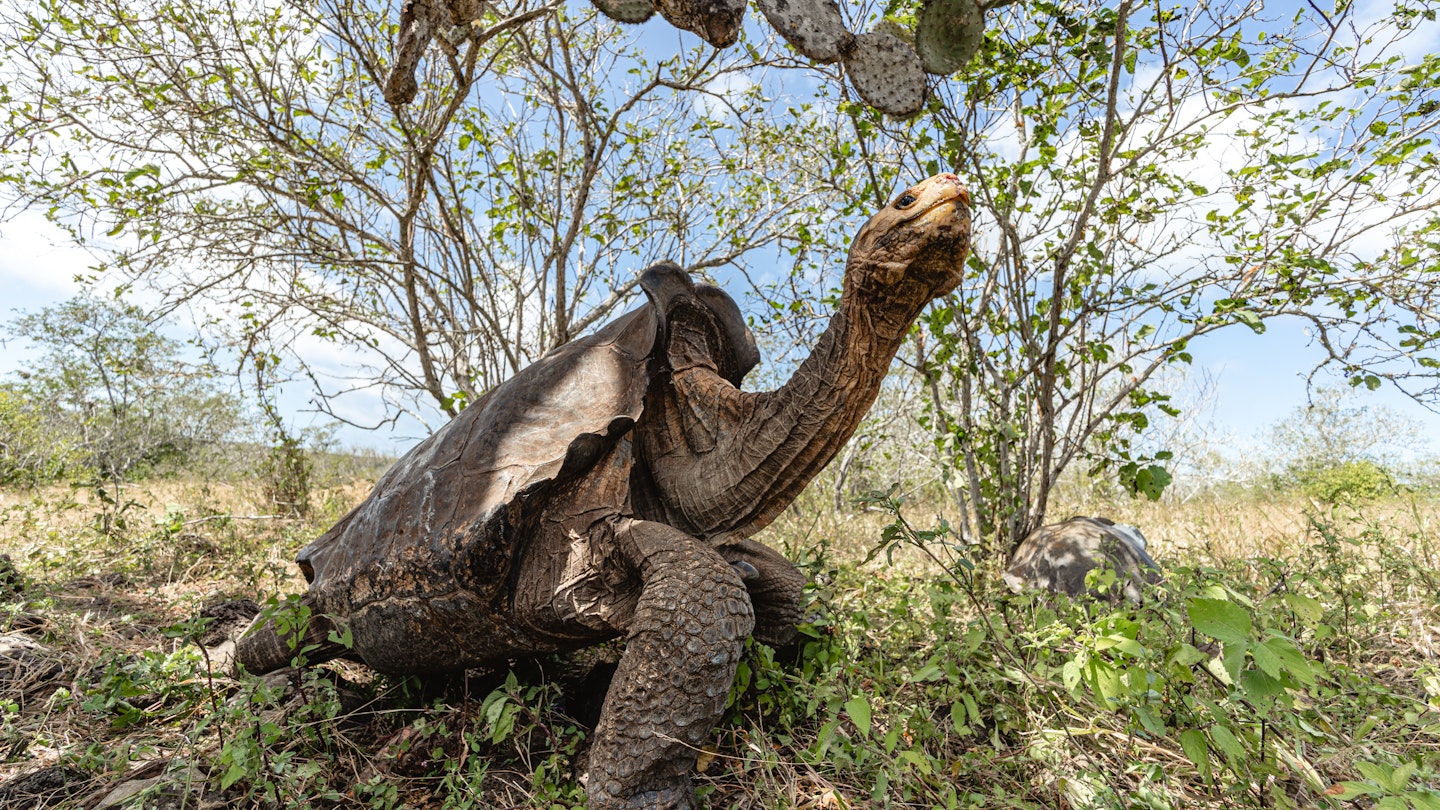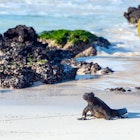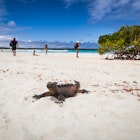Six decades ago, when Galápagos National Park was created, the giant Española tortoise was critically endangered, with just 15 left in existence. Now – thanks to a 55-year-long captive breeding program – the species is back from the brink of extinction, and those original 15 tortoises have finally been returned to their island home.
The Galápagos National Park Directorate (GNPD) and Galápagos Conservancy announced the end of the Española tortoise breeding program – part of the islands’ Giant Tortoise Restoration Initiative – in January, and the aim was to repatriate the tortoises in March. But the pandemic delayed the transfer, and it wasn’t until mid-June that the original 15 were finally reintroduced to the wild. Under quarantine, they were de-parasitized and microchipped, taken by boat from Santa Cruz Island to Española, and carried 1.5 miles inland to Las Tunas, the area determined to be most conducive to their survival.

“The 12 females, weighing an average of 77 lbs, were carried by a single person, while for the 3 males whose weight exceeded 120 lbs, two people were needed in relays,” Danny Rueda, director of the Galápagos National Park, said in a press release. “After the release, the staff remained for approximately four more hours, making observations of the behavior of the tortoises as they settled back into their home.” The tortoises will be monitored in person in about six months, according to the Galápagos Conservancy’s Washington Tapia, but scientists will keep an eye on them via GPS in the meantime.
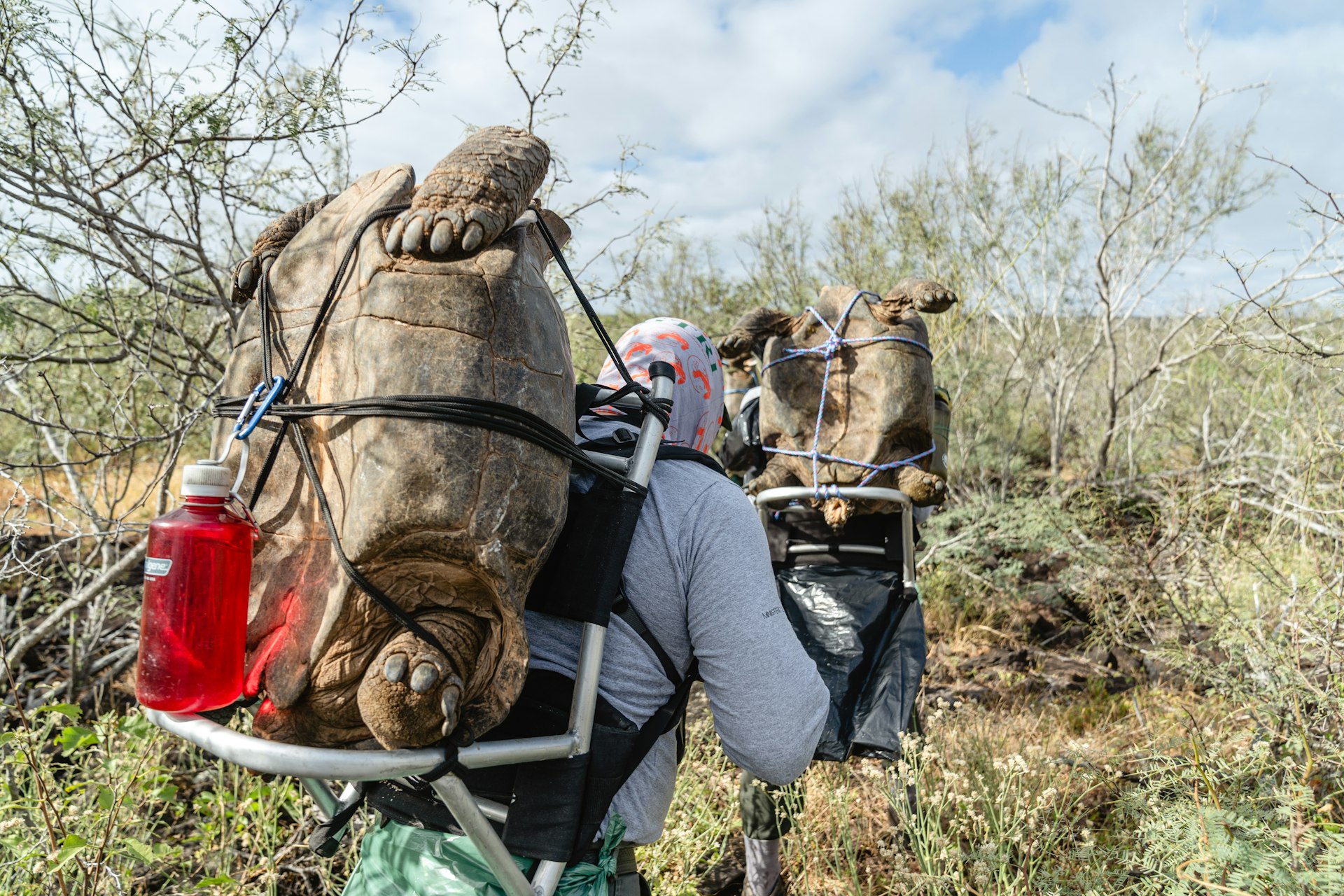
From the mid-1960s, when the Española tortoise program began, until January of this year, the core group of 12 females and three males has been responsible for the reintroduction of some 1900 hatchlings to the wild. The once-threatened population now numbers more than 2300 tortoises, and they can all trace their lineage to those original 15 – and nearly 800 of those can trace their lineage to one particular tortoise. Formerly of the San Diego Zoo, an Española giant named Diego has been in the captive breeding program since 1977, and in that time, he’s contributed to 40% of the offspring repatriated to the island – an impressive stat for a guy that’s more than a century old.
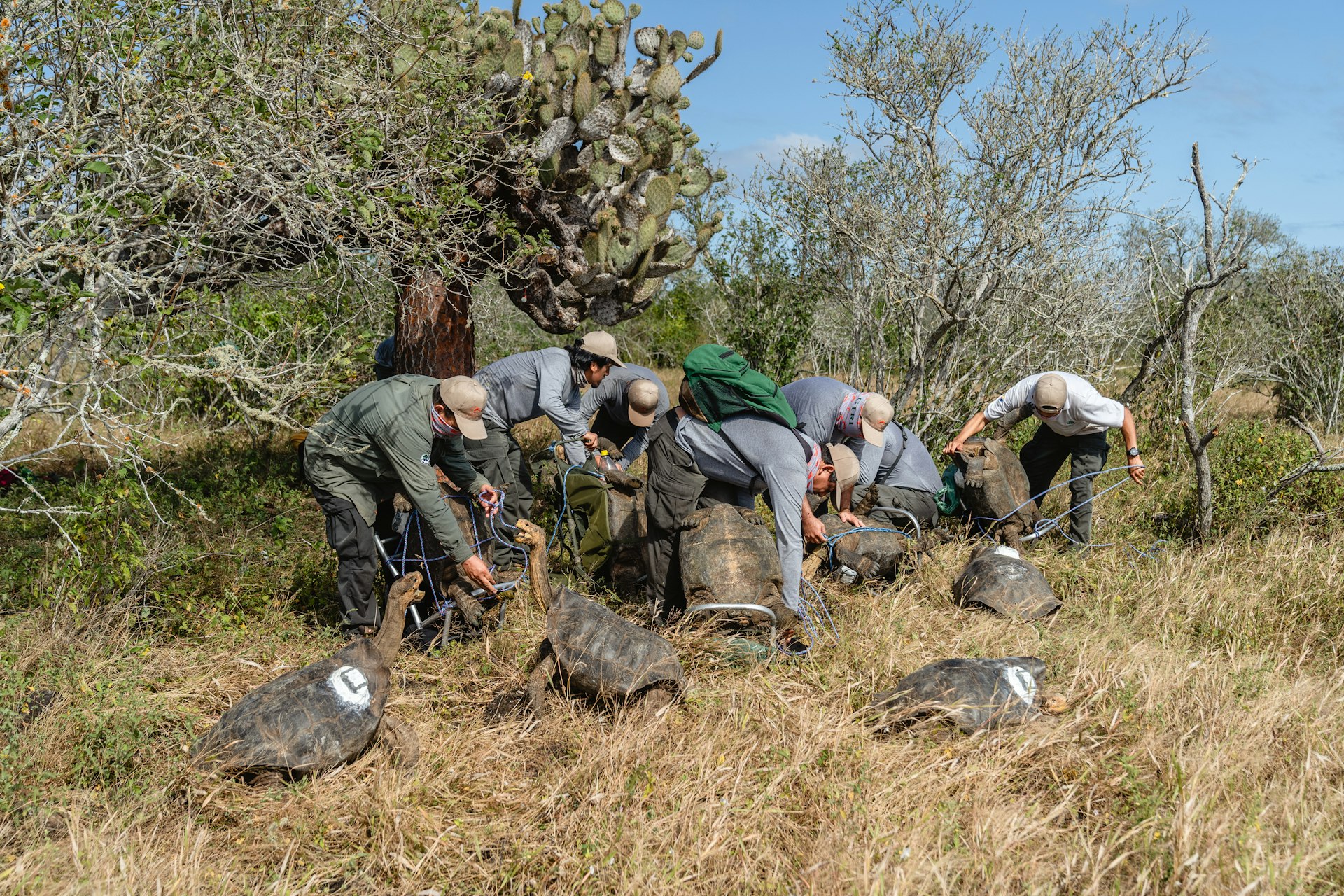
“We managed to save a species that would otherwise have become extinct,” Ecuador’s minister of environment and water, Paulo Proaño, said in a press release. “It can only be described as successful.”
For more information, visit galapagos.org.
You may also like:
This US wildlife care center has returned dozens of birds to their natural habitats
Whales are thriving in oceans without cruise and container ship traffic
Animals come out to play in Yosemite while humans stay away

